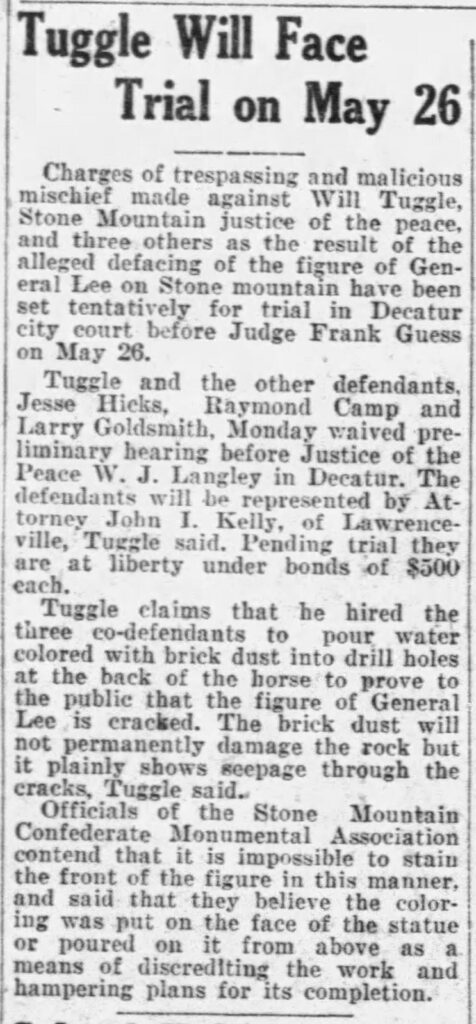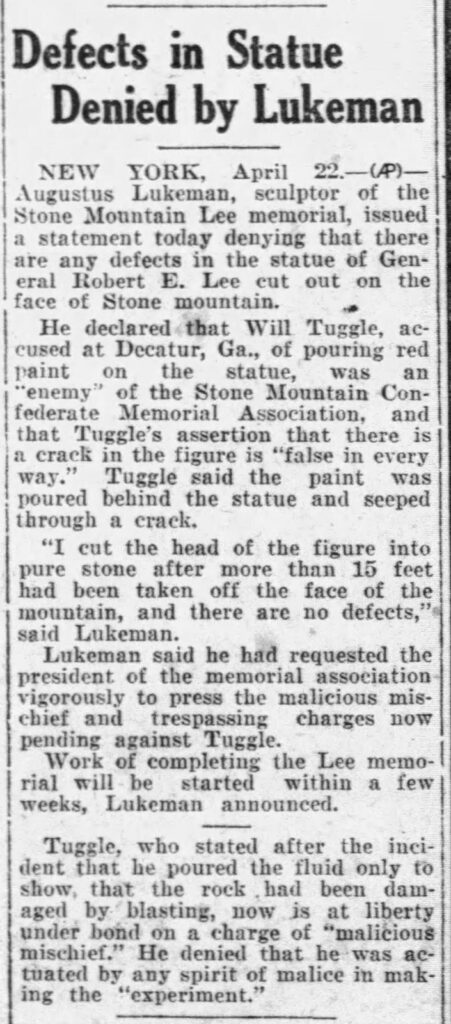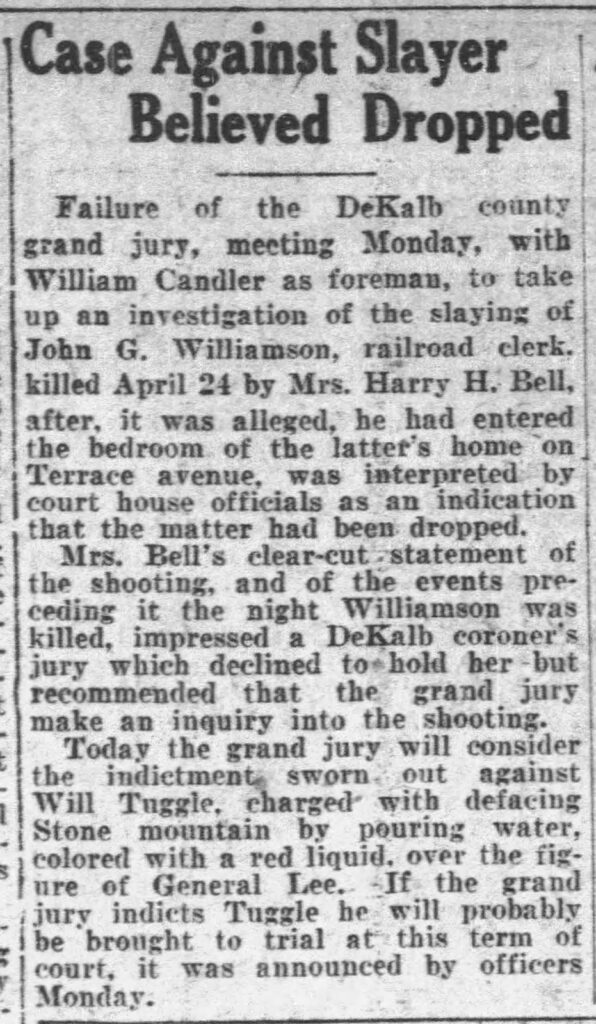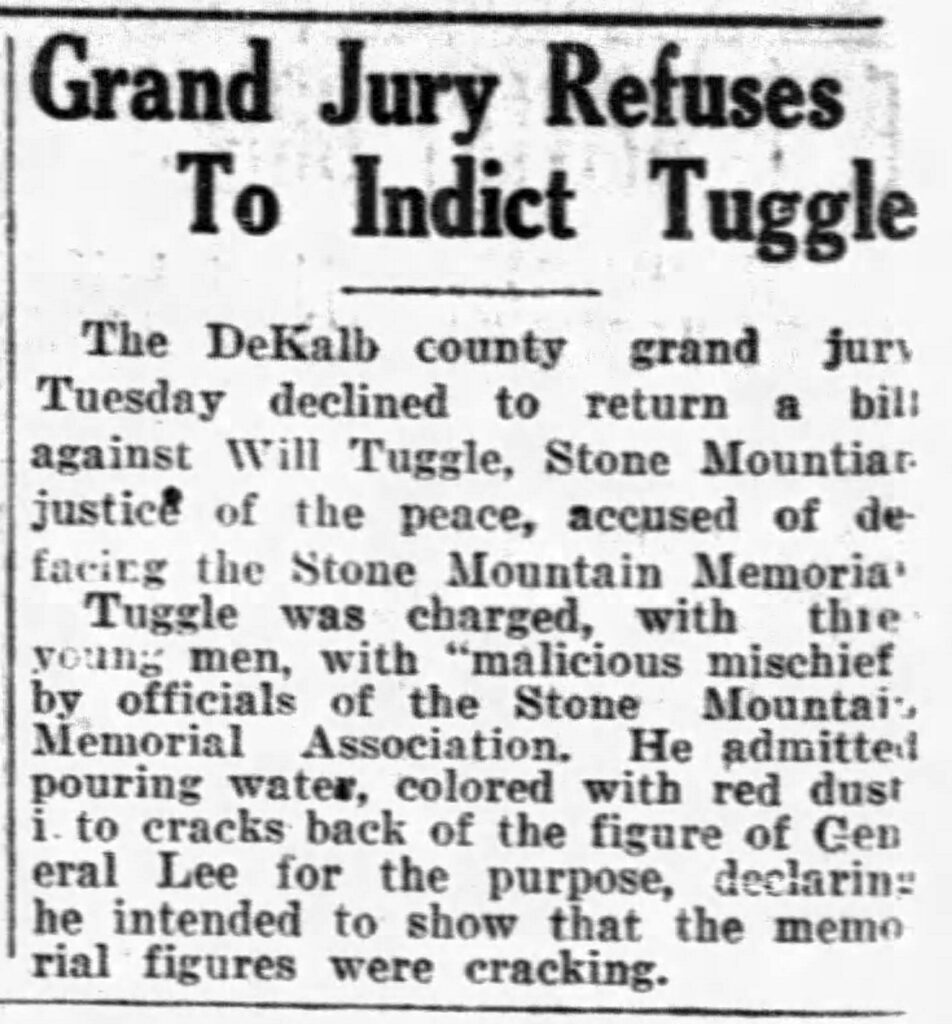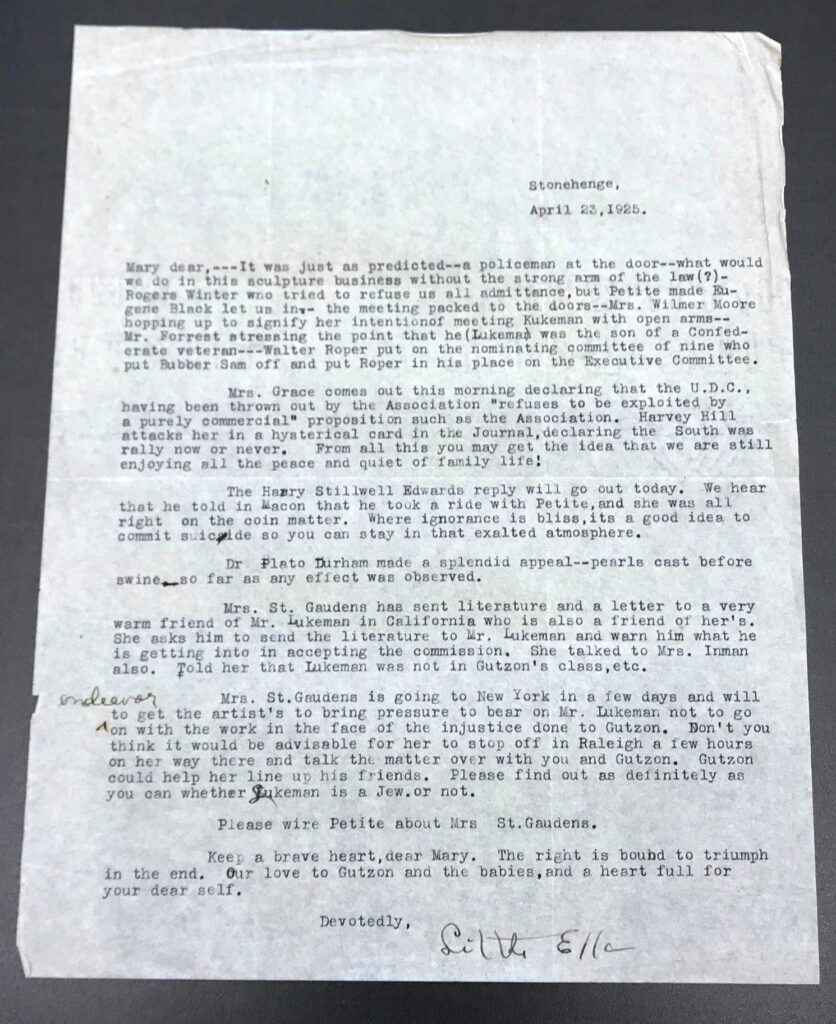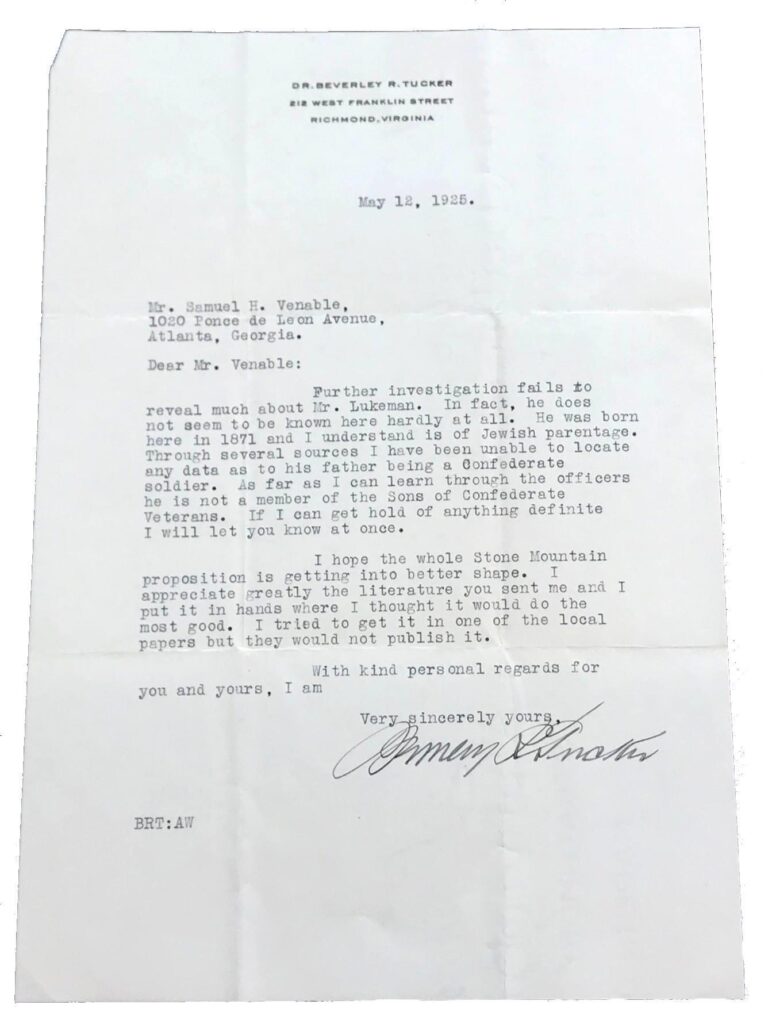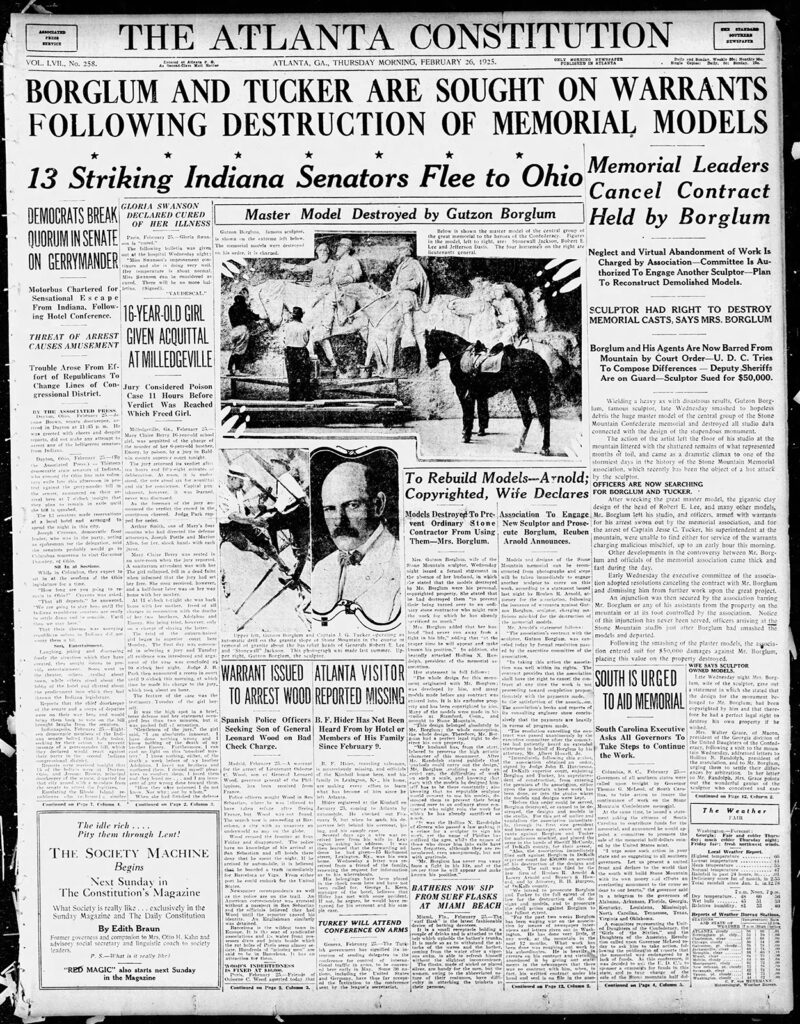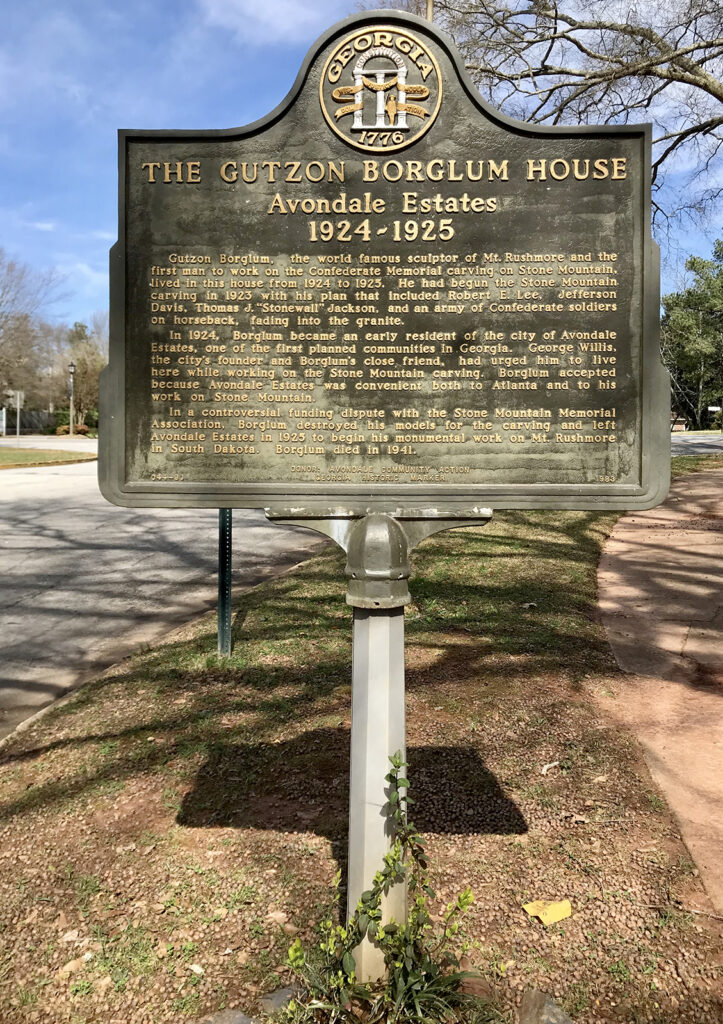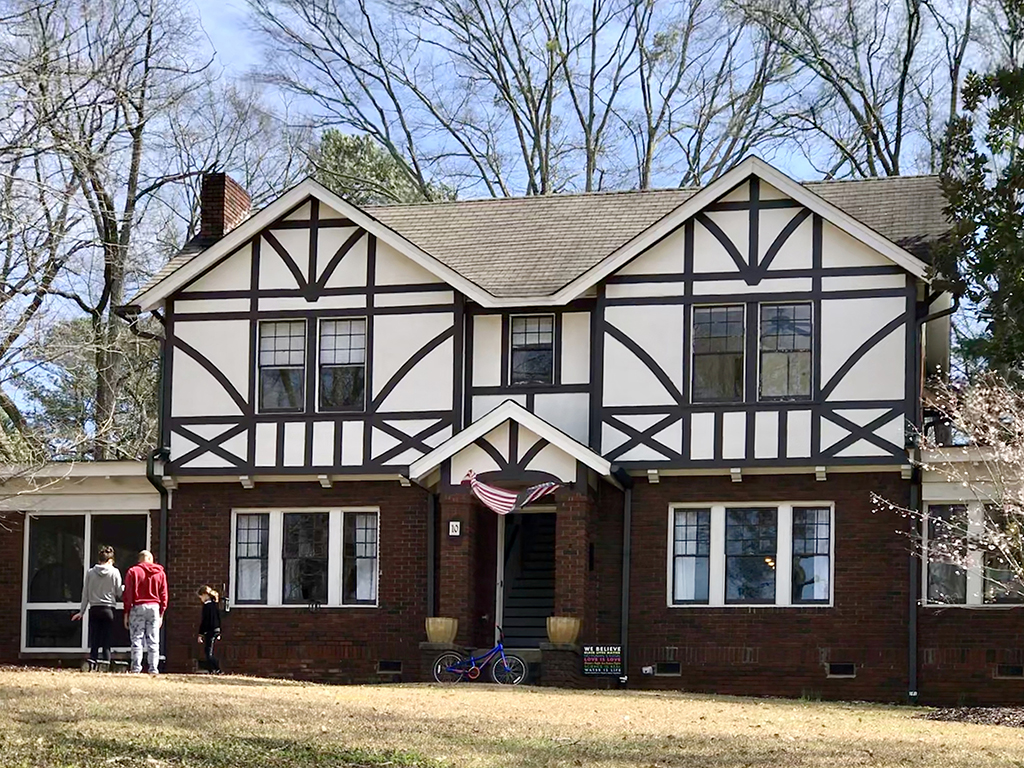In April of 1930, Will Tuggle, justice of the peace in Stone Mountain, was charged with "malicious mischief" and trespassing for pouring red liquid into one of the drilling holes behind Robert E. Lee's head on the scarf of Stone Mountain. He'd enlisted the help of, and paid, four other locals that had also worked with him on the carving in the past and claimed he was just trying to prove the carving of Lee's head on the scarf of the mountain by acclaimed sculptor Augustus Lukeman was cracked and defective. Given that the original sculptor, Gutzon Borlglum, would be briefly reinstated as the the sculptor in 1934, a year prior to Lukeman's death, I am inclined to believe that Tuggle's stunt was part of a larger organized effort to target Lukeman. After all, some letters in the Venable papers at Emory reveal that Borglum's wife and and some of the Venables had gone to some lengths to investigate Lukeman's origins and ancestry within months of Gutzon Borglum's notorious falling out with the Stone Mountain Memorial Association in 1925.
I have felt for a long time now that many of Georgia’s universities should join together to reframe the history of Stone Mountain and perhaps even create an institute for fresh scholarship. After all, many of these very institutions are implicated in its history to varying and often astonishing degrees, and there's quite a trove of untouched materials. I regularly find documents and old newspaper articles and such that shed more light on the actual history of the mountain and the Confederate carving. At times the narrative comes together like a suspenseful caper, and I'm excited by discoveries. Other times I'm heartsick over what I unearth and even withdraw from research for a bit because of it.
Last year, for example, I went to look through some archives about Stone Mountain at Emory, and I'll never forget how two letters made my stomach turn, particularly because they confirmed the racism, in this instance anti-Semitism, of some of the powers guiding the Confederate carving. First was a letter dated April 23, 1925, to Mary Borglum, wife of Gutzon Borglum, from "Little Ella" Venable urging her to find out if Augustus Lukeman, the second sculptor selected in Borglum's place was Jewish:
“Please find out as definitely as you can whether Lukeman is a Jew or not.”
Next was a letter dated May 12, 1925, between Sam Venable, then owner of Stone Mountain and a white supremacist, with a prominent Virginia “alienist” (psychiatrist), Dr. Beverly R. Tucker. It appears that Sam Venable, among others in his family and coterie, was obsessed with investigating whether Lukeman was “a Jew” and if his German-born father had really been a Confederate veteran or whether Lukeman himself was even a true son of the South.
In 1929, Samuel H. Venable was still campaigning for Gutzon Borglum to be reinstated as the sculptor of the Confederate carving on Stone Mountain. And by 1934, Borglum was in fact briefly put back in charge. The story has always been told that the Stone Mountain Memorial Association could no longer pay Augustus Lukeman (1872-1935) during the Great Depression, and that may be partly true, but a few red flags tell me he may well have been driven off the project. In 1938, not long before his own death in 1941, Borglum would again began talking again about returning to complete the carving, but we know how that turned out.
In 1930, look who suddenly defends Borglum against charges that he ever destroyed those original models of the Stone Mountain carving. Sam Venable's sister. Did he or didn't he smash the models? Or was this part of the protracted plan to get Borglum cleared and reinstated all along?
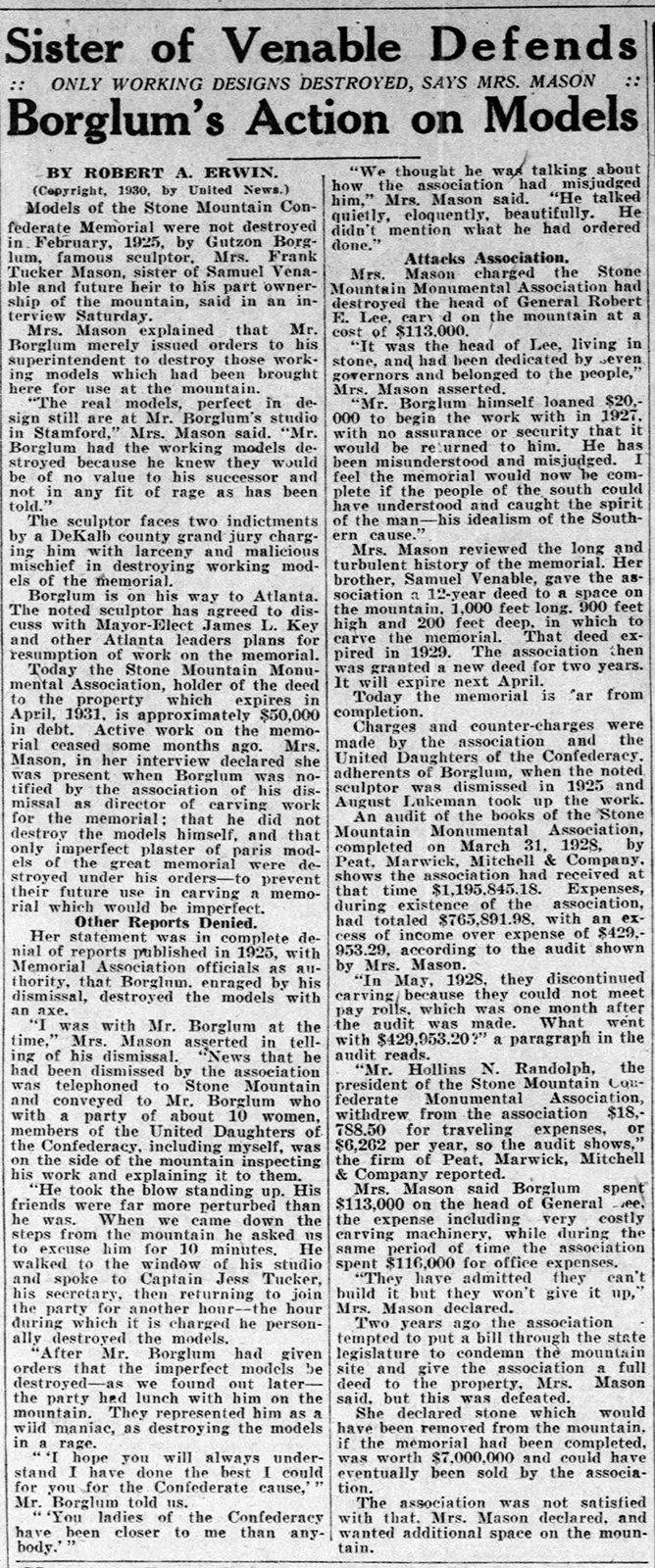
Atlanta-Constitution, 8-31-1930



